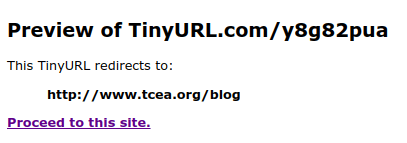Did you get the bad news? Goo.gl, the URL shortener service, will no longer be available after April 13, 2018. In this blog entry, let’s explore some alternatives. Those alternatives must address some of the main features of Goo.gl’s service, namely statistics, QR code generation, and easy URL shortening.

The Official News
The official announcement came via Slashdot and Engadget:
Google is replacing its URL shortener service, goo.gl, with Firebase Dynamic Links (FDL) as of April 13th. These new smart URLs will let you send people to any location within iOS, Android or web apps.
The complaints came fast and furious when people read that Google’s URL shortener was going away. Responses on Twitter included:
- Well that stinks. There are plenty of others out there but theirs was the best. (Tracey Smith)
- Sadness, I just shared it last week w/ one of my most reluctant to tech staff members & she was optimistic on it. Now, I get to tell her “no more” — sad. (Jen Wagner)
The complaints arise because Goo.gl offered statistics as well as QR code generation. While some have already offered a few solutions (e.g. Tinyurl.com, Bit.ly) to replace Goo.gl, let’s take a look at some other approaches. If you require information about the usage of URLs, you can rely on shorteners like Bit.ly.
For Chrome browser users, you will find a nice collection in the Chrome Web Store. Firefox Quantum browser users can find a wealth of add-ons that qualify as URL shorteners online.
QR Code Generator, Anyone? For those seeking QR code generation, the process may often involve first creating the shortened URL and then pasting it into a QR code generator of choice. Two that I use from time to time include GoQR.me and QR.net.
You’re So Vain, You Think This Link Is About You
Other solutions, like ReBrandly, allow you to buy your own domain ($2 was the going rate for tceamg.xyz) and publish your own custom URLs. This can be handy since you will get access to a management console with statistics on visits or hits on each link you have created. As the ReBrandly folks point out, there are various reasons for getting a “vanity URL.” Here are some of the ones they mention:
- Social media tracking and advertising
- Link tracking and viewing sources of hits
- Build brand awareness
You can read more about each of the reasons above. If you have the technical chops to host your own URL shortening service, however, then you will find the two below of interest.
Hosting Your Own URL Shortener Service
If paying a few dollars and letting someone else handle the server management is not your cup of tea, then,you may want to host your own URL shortening service. Here are two solutions to explore. These would be great for a school district hosting its own server. Each may also be great for someone who is relying on Amazon Web Services (AWS) cloud to host content. Getting your own server may be a part of your first step towards hosting your own website or blog for yourself, your school, or district/organization.

Solution #1 – YOURLS
YOURLS describes itself as “a small set of PHP scripts that will allow you to run your own URL shortening service.” Since it is free, open source and offers statistics for your custom web addresses, it has a lot to offer. You can find a list of server requirements online. Here is one example: OE.CD (Organization for Economic and Cooperative Development).

Solution #2 – Phurl
Not unlike YOURLS, Phurl is a set of PHP scripts you can set up on your own server. It offers a variety of features, such as:
- Simple, easy and neat interface
- Basic admin panel to view, search for, and delete shortened URLs
- Notification of new version of Phurl via admin panel
- Shorten URLs using an alias generated by the script, or enter a custom alias
- Browser Bookmarklets included for one-click shortening
- Installs in a few minutes with built-in installation wizard
No matter what URL shortener you use, if you’re looking to make it easy for others to access your content, be aware that some URL shorteners are used for nefarious purposes. You may need to decode short web addresses.
Decoding Short URLs
If you use TinyURL or Bit.ly, you may want to make note of these “decoders.” Some ways to “decode” include TrueURL , CheckShort URL, and Get Link Info. The latter alleges it works with all custom web address creators, including Tinyurl, Bit.ly, Goo.gl, and others. The benefit of these URL expanders is summarized in this way:
 You can take any TinyURL and get a preview of where it might go. To do so, adjust your TinyURL to include the word “preview” in it. For example, consider these two shortened website addresses:
You can take any TinyURL and get a preview of where it might go. To do so, adjust your TinyURL to include the word “preview” in it. For example, consider these two shortened website addresses:
- Original link: https://tinyurl.com/y8g82pua
- Preview link: https://preview.tinyurl.com/y8g82pua
When Services Fail, Be Nimble
Web services come and go. This is true even when Google hosts those services (view the Google Graveyard). Be nimble and switch to another service. The solutions mentioned in this blog entry should make your next transition a hop and a skip rather than a jump into the unknown.

